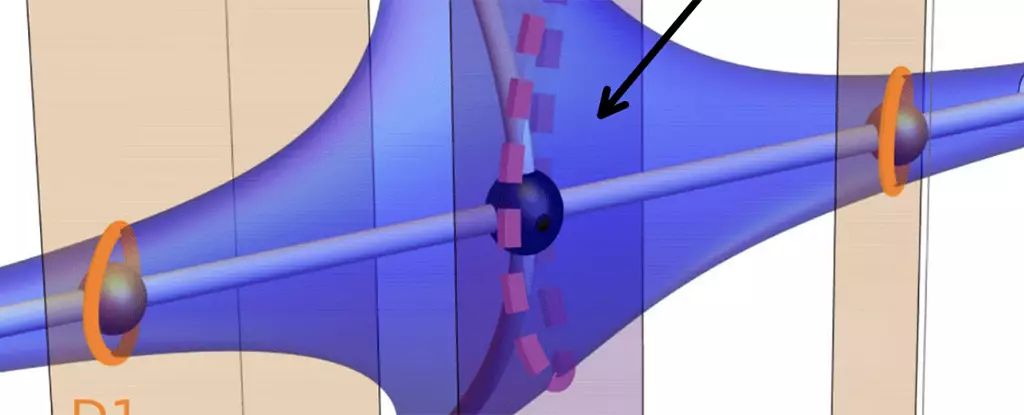The fascinating realm of physics frequently witnesses groundbreaking discoveries that challenge long-held beliefs and expand our understanding of the universe. A recent achievement in this field comes from an international group of researchers who, after rigorous efforts spanning over a decade, have successfully identified a unique quasiparticle known as a semi-Dirac fermion. This discovery, stemming from theoretical predictions made 16 years ago, enhances our comprehension of mass in particles, reshaping the conventional definition and scope of effective mass.
At its core, the concept of mass is central to physics, commonly associated with an object’s resistance to movement and its energy in various states. Mass is often categorized into two types: rest mass, which describes a particle’s energy while at rest, and effective mass, which reflects a particle’s behavior in motion. The newly discovered semi-Dirac fermion deviates from these established norms. Unlike typical quasiparticles, which maintain a consistent mass regardless of direction, the semi-Dirac fermion exhibits variance in its effective mass depending on its direction of motion. This peculiar characteristic positions it as an anomaly within the realm of particle physics, with implications that could extend into quantum physics and future electronic technologies.
The semi-Dirac fermion was found within the complex structure of a ZrSiS semi-metal crystal, subjected to extreme conditions of minus 452 degrees Fahrenheit (about minus 269 degrees Celsius). The isolation and study of such a rare quasiparticle highlight the meticulous approach researchers must adopt, requiring not only sophisticated instruments but also the ability to manipulate materials to unearth underlying secrets.
The research team, comprising physicists from various locales, initially set out to explore different properties within the material but serendipitously stumbled upon the semi-Dirac fermion. Yinming Shao, a condensed matter physicist at Pennsylvania State University, emphasized the unexpected nature of their findings. They used magneto-optical spectroscopy—a method that examines materials using infrared light reflections in the presence of an extraordinarily strong magnetic field—leading them to observe the characteristics of the semi-Dirac fermion.
Shao’s analogy of the quasiparticle as a tiny train confined to a network of tracks provides a vivid visualization of its behavior. Depending on the direction of motion, this particle behaves either like it possesses mass, akin to a train experiencing resistance on one set of tracks, or as if it is massless, gliding along another track. This remarkable trait of “switching” between states of mass and masslessness introduces complexity to the study of particle mechanics.
The implications of the discovery are profound and multifaceted. While specific applications remain speculative, the semi-Dirac fermion offers potential breakthroughs in the understanding of quantum materials and devices. The variance in effective mass could pave the way for advanced electronic sensors and quantum computing elements, making them more efficient. Researchers are optimistic that the full exploration of this quasiparticle will unlock new avenues for technology that rely heavily on quantum phenomena.
Despite these promising prospects, there remain numerous challenges for researchers. One significant undertaking will be to isolate single layers from the multi-layered structure of the ZrSiS crystal. Researchers acknowledge that the discovery presents as many questions as it does answers, with many phenomena associated with these quasiparticles not yet fully understood. The journey toward harnessing the capabilities of the semi-Dirac fermion is still in its infancy, but the excitement is palpable among physicists eager to explore the uncharted waters of quantum mechanics.
As the scientific community processes the implications of the semi-Dirac fermion’s discovery, emphasis on continued research and experimentation becomes crucial. The task of deciphering its behavior and understanding its intricacies involves potent theoretical and practical investigations. While many questions linger, the journey into this quantum frontier remains inviting.
For a field defined by constant evolution, discoveries like that of the semi-Dirac fermion stand as testament to the complexity and depth of our universe. They remind researchers that science is often an adventure of unexpected turns, yielding new knowledge that reshapes our understanding of reality and inspires future generations of scientists and inventors to pursue the unknown. The quest to unravel these mysteries continues, pushing the boundaries of what we know about our universe and redefining the foundational principles of physics.

